Traditional Clothing of Kyrgyz people and nations living in Kyrgyzstan
National Kyrgyz Clothing
Kyrgyz traditional clothing is unique and expresses the nation’s rich history, nomadic heritage, and cultural identity. Designed for practicality and resilience, these garments show the lifestyle of the Kyrgyz people, who have long lived in the rugged landscapes of Central Asia.
Most Kyrgyz traditional clothing is made from natural materials such as wool, felt, and cotton. Traditional Kyrgyz attire is both functional and symbolic, often decorated with elaborate patterns representing nature, strength, and spirituality. From the Kyrgyz iconic “Kalpak” worn by men to the beautifully embroidered dresses of women, national Kyrgyz clothing continues to hold deep significance in modern times, preserving the legacy of the past while remaining an essential part of cultural celebrations and daily life.
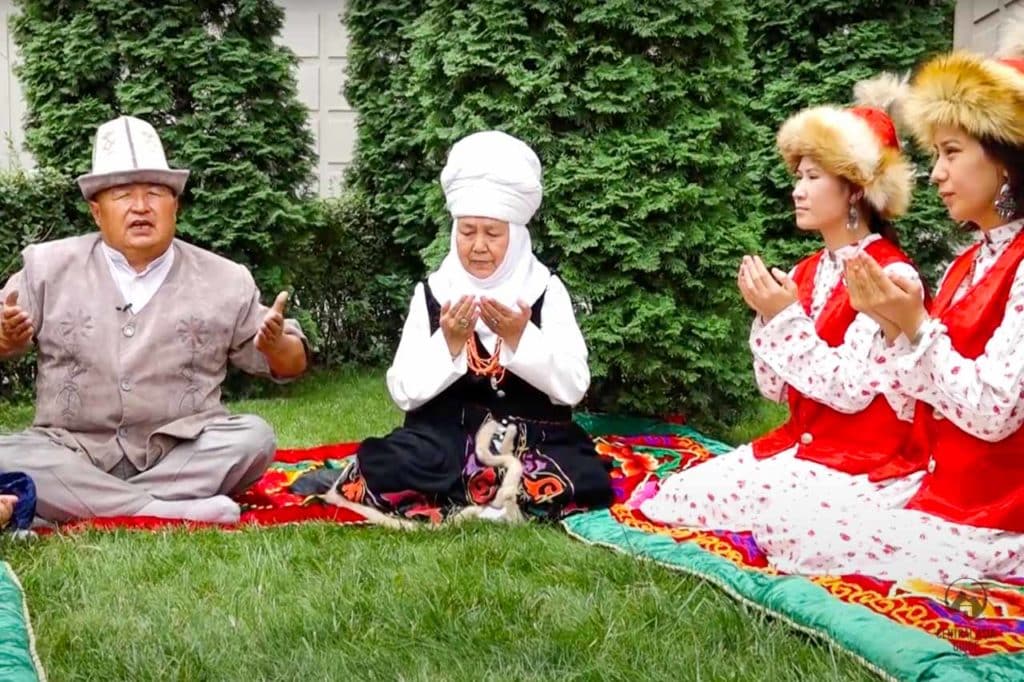
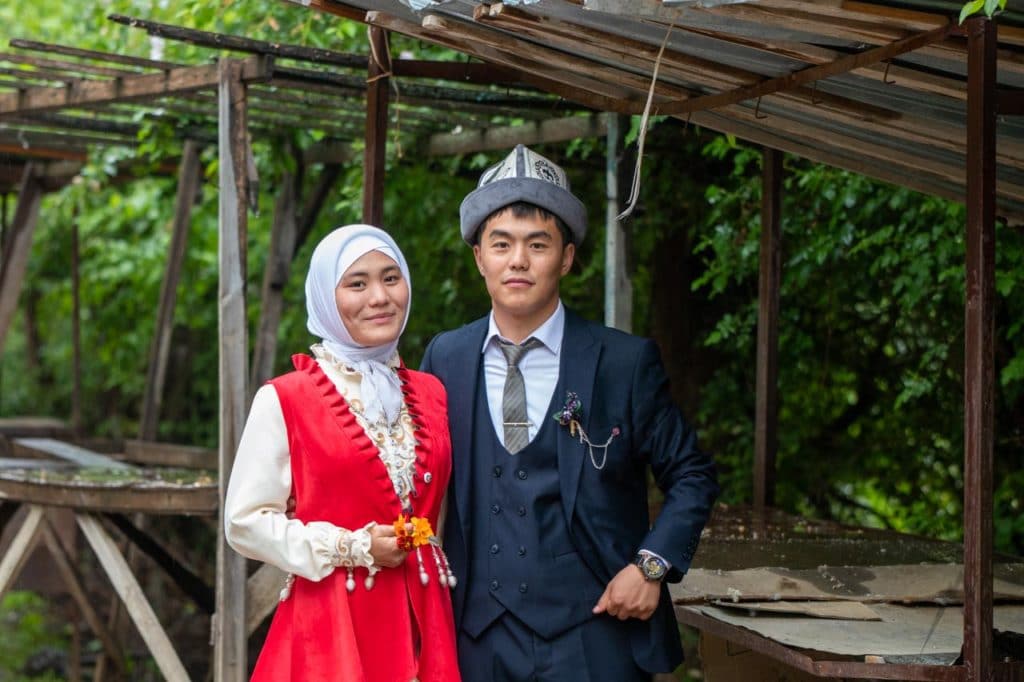
Kalpak
Kalpak is the traditional headgear of Kyrgyz men and the most known Kyrgyz garment. It provides shade in hot summer and warmth during the cold winter. Kalpak is mainly worn in the celebration ceremonies as well as in the funerals, but some people wear it in the everyday life as well and can be seen especially in bazars. Kyrgyz people believe that Kalpak symbolizes the country’s snow-capped mountains.
There are more than 80 different variations of Kalpak and you can even find bus stops constructed in the shape of kalpak. Kalpak is also listed in the UNESCO list of Intangible Cultural Heritage of Humanity. There is even a Kalpak day celebrated every year in March.
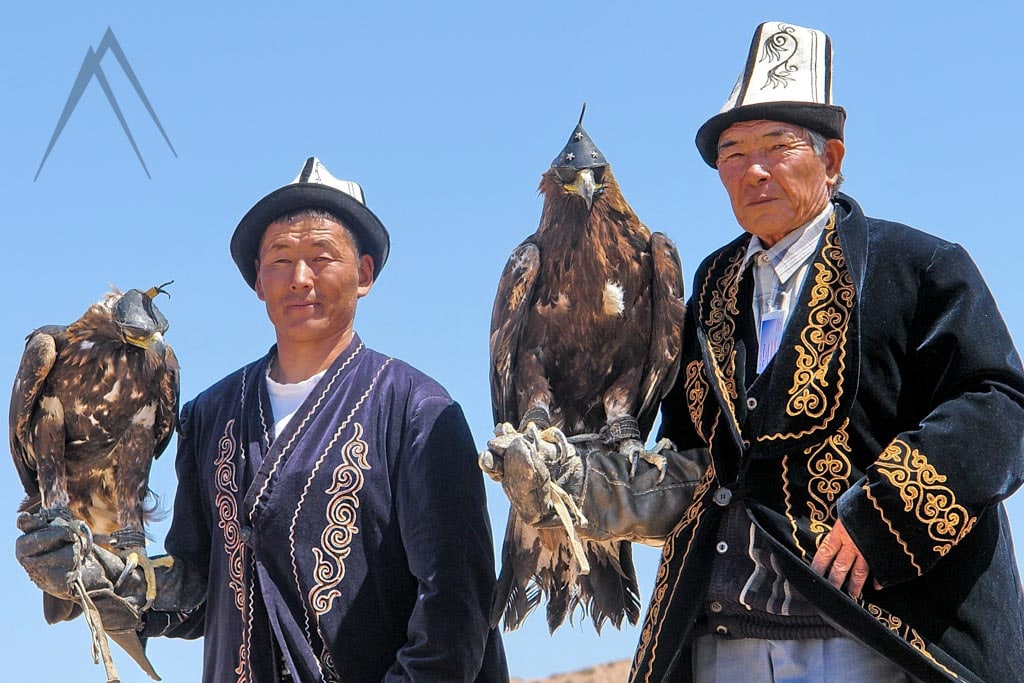
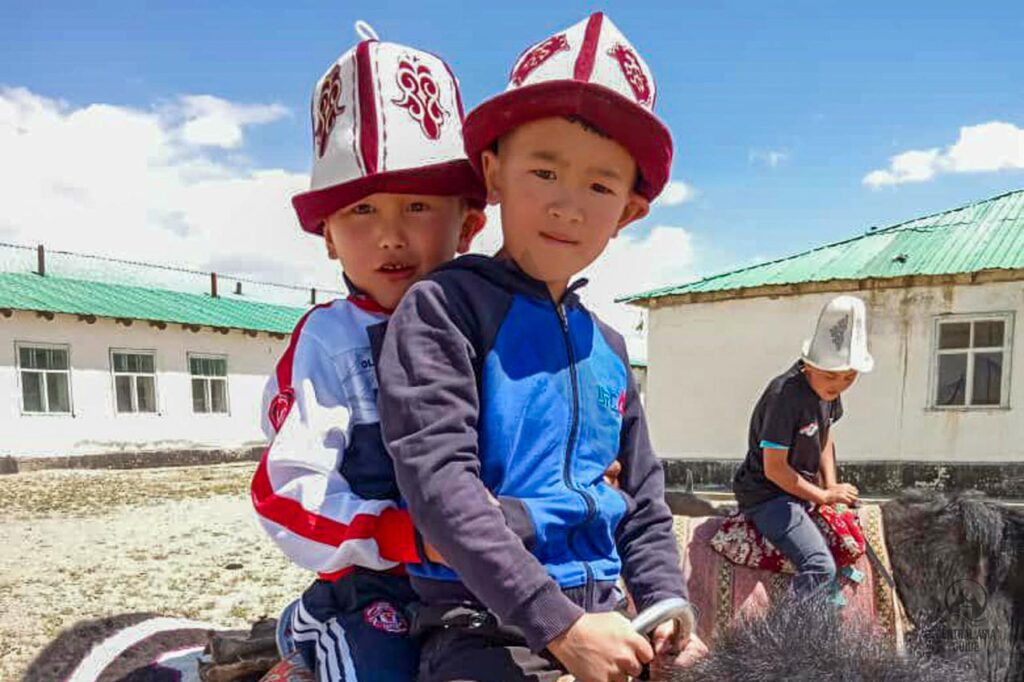
Chapan
The Chapan is a long, robe-like garment that holds significant cultural and practical value in Kyrgyzstan. Worn by both men and women, it is one of the key symbols of Kyrgyz heritage, it is warm, protected from the wind and cold.
The Chapan is often made from materials such as thick wool, silk, or cotton, and in colder regions, it is lined with felt or fur for added warmth. The garment is usually made long, reaching the ankles, and it is usually fastened with ties or a belt at the waist. Often Chapan is made of rich embroidery, which shows traditional Kyrgyz motifs such as geometric patterns, flowers, and animals.
The ornaments of Chapan, reflect the nomadic lifestyle and spiritual beliefs of the Kyrgyz people. The colours can vary, with vibrant reds, blues, greens, and golds being common, particularly for special occasions like weddings and festivals.
Historically, the Chapan was a symbol of wealth and social standing, with more intricate designs and higher-quality materials indicating a person’s status. However, today its practical use as a warm, layered garment was also essential for the Kyrgyz people, who lived in regions with harsh winters and a nomadic lifestyle. The loose-fitting design allowed for ease of movement, particularly for activities like horseback riding and herding livestock.
Today, the Chapan is still worn during national holidays, cultural ceremonies, and weddings and even in daliy life mainly among older men. Modern designers have blended the Chapan into contemporary fashion, mixing traditional elements with modern styles while keeping the garment’s cultural significance alive.
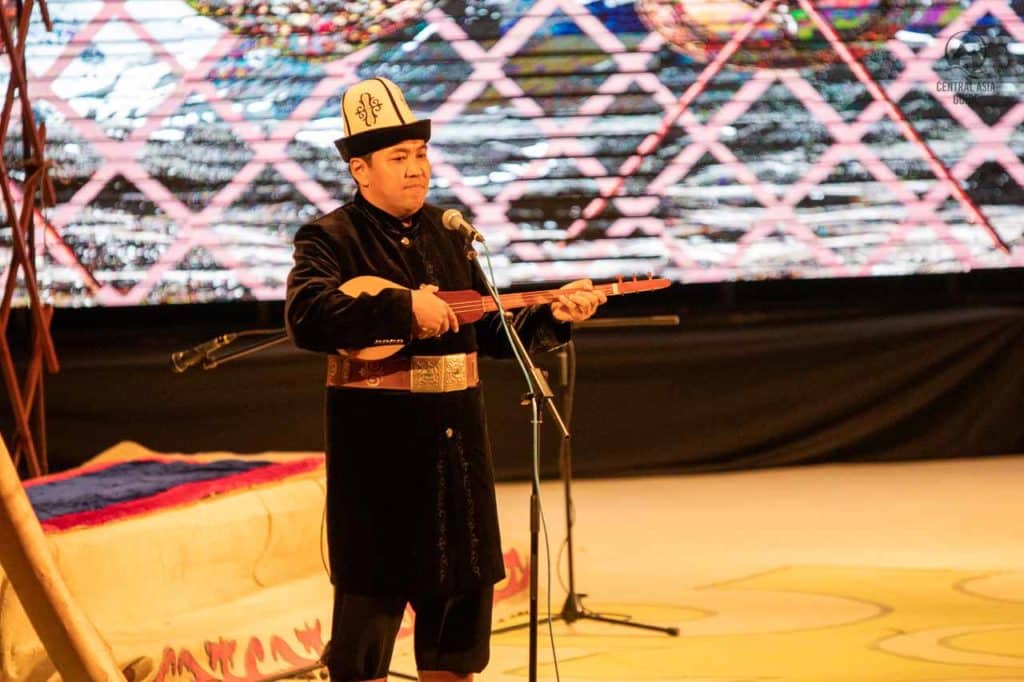

Bel Boo or Kushak
The Bel boo is a traditional Kyrgyz belt worn over clothing to secure and enhance the outfit, often featuring a buckle on one end. In traditional Kyrgyz men’s attire, wearing a belt is essential. Over the past century, men have used a *kushak*, a wide leather or velvet belt adorned with silver decorations.
The oldest form, called boto kur or bel kur, was a 1.5–2 meter homemade fabric belt. Older men wore white belts, middle-aged men darker colors, and young men red. Boys would start wearing a kushak with their first shirt. Later, belts were made from factory cloth or square scarves, with regional variations in the terms and styles of wrapping.
The method of tying a scarf as a belt across southern Kyrgyzstan is consistent and is likely borrowed from Uzbek and Tajik traditions. The scarf is wrapped diagonally, slightly twisted, with the embroidered corner hanging down the back. The ends are tied in a double knot at the front or slightly to the right. It is common for younger men to wear two or three scarves at once, showcasing this style as a sign of youthful flair and fashion.
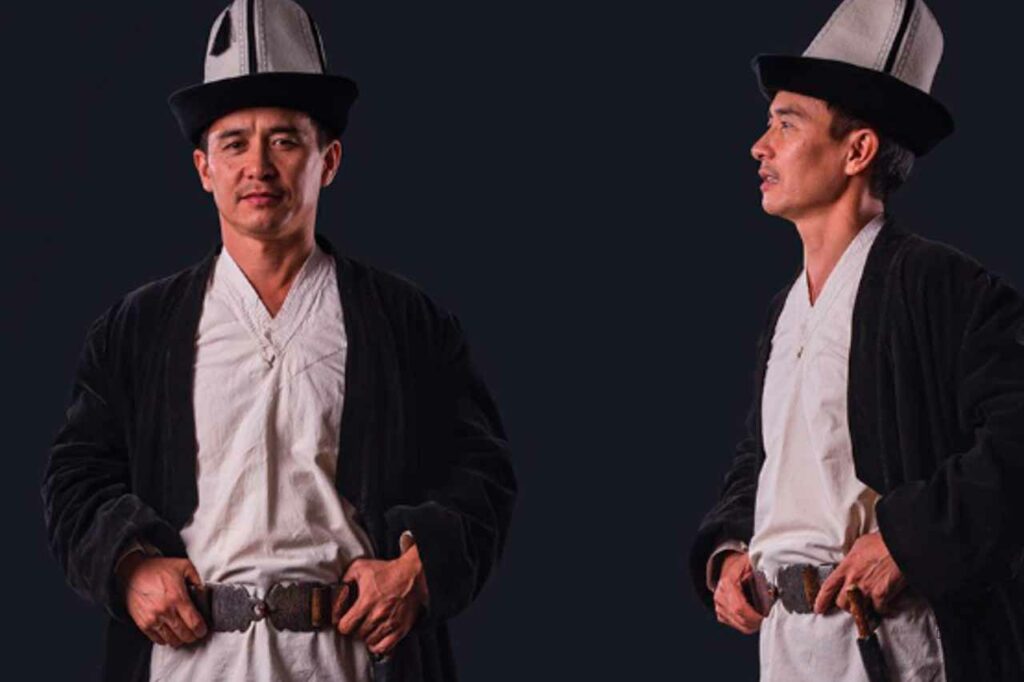
Beldemchi
Beldemchi is a traditional wraparound skirt often crafted from velvet or silk, with a leather or fur lining and intricate embroidery. This garment was designed for practicality, allowing women to wear it comfortably while riding horseback.
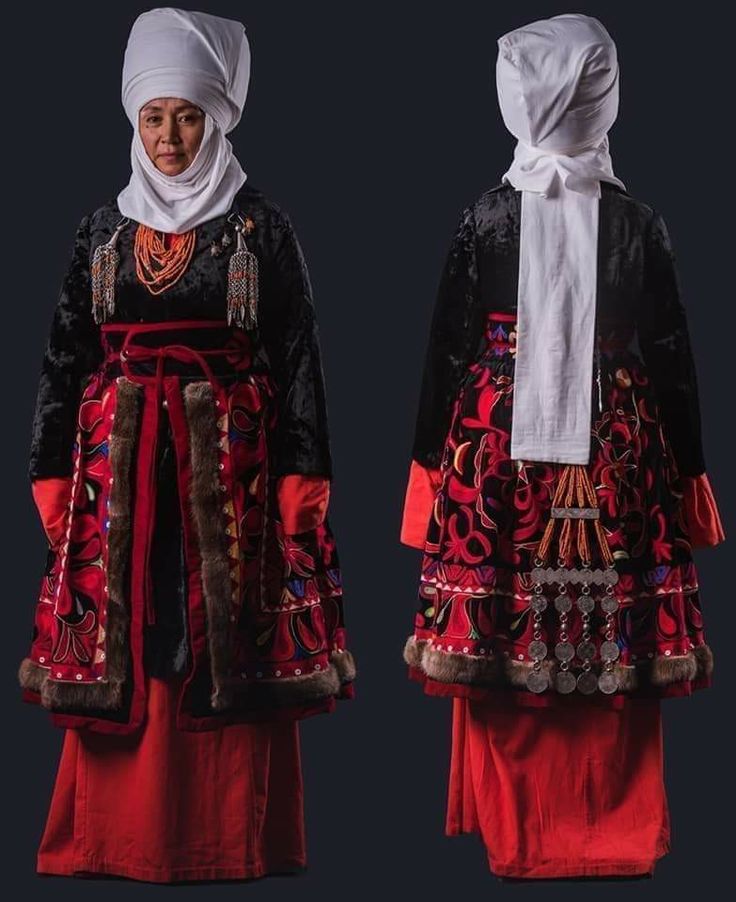
Beldemchi provides both coverage and warmth during long rides. Importantly, the Beldemchi was specifically worn by women after childbirth to help tighten the stomach, offering support and aiding in recovery. Its combination of functionality, warmth, and cultural significance makes it an important element of Kyrgyz traditional clothing.
Today, the Beldemchi continues to hold cultural significance in the lives of Kyrgyz women and girls, though its use has evolved in modern times with various new designs and fashion. While it is no longer commonly worn for horseback riding, it remains a cherished part of traditional attire, especially for special occasions and cultural celebrations as well as daily fashionable clothing.
Modern Kyrgyz girls may wear the Beldemchi during weddings, festivals, or when participating in traditional ceremonies, where it symbolises both heritage and femininity or even to coffee shops to hang out with friends.
Shökölö (bride's skullcap)
The Shökölö in Kyrgyz or Saukele in Kazakh is a traditional headdress worn by the bride, symbolizing her transition into marriage and her cultural identity.
This cone-shaped headdress is often adorned with intricate embroidery and decorative elements such as coral, turquoise, strings of pearls, and silver or gold pendants.
The design of the Shökölö is both elegant and symbolic, with the veil cascading from the back, adding to the bride’s ceremonial appearance. It serves not only as a beautiful and important part of the bridal attire but also as a representation of the bride’s status and connection to her cultural heritage.
The rich embellishments on the Shökölö reflect the artistic craftsmanship of the Kyrgyz and Kazakh peoples, with each design element carrying its own cultural meaning and significance.
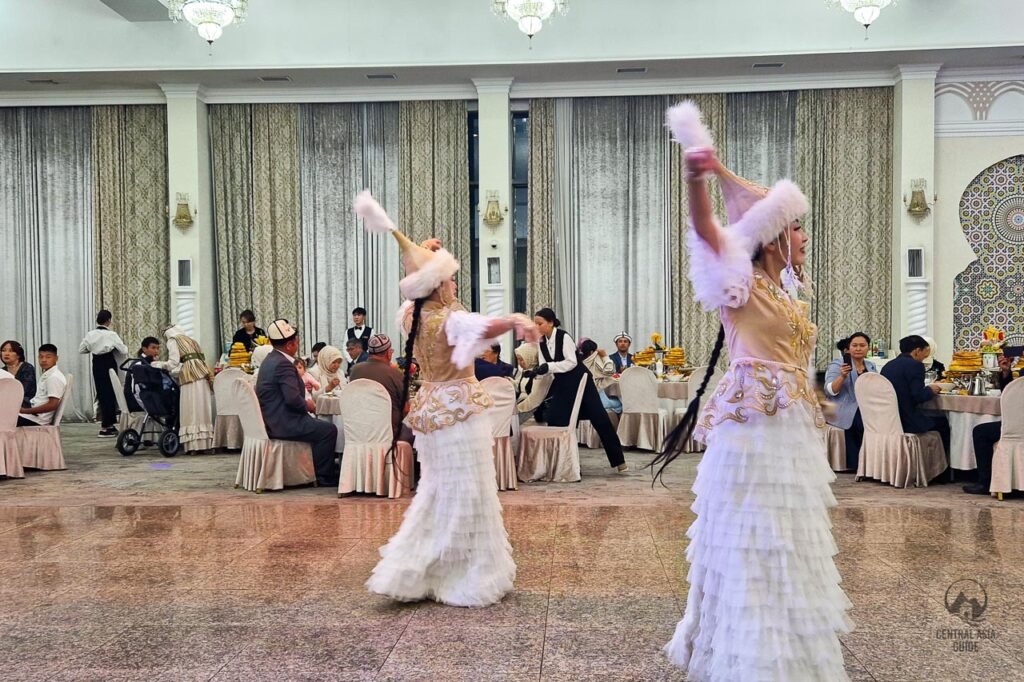
Koinok
Koinok means dress from Kyrgyz, the main dressing of young women. Elaborate dresses, koinok were made from a silken patterned cloth. Mainly worn for special occasions.
Uku- Topu
The headdresses of the girls are usually decorated with feathers of birds, various ornaments sewn to them: silver, pearls, coral, etc.
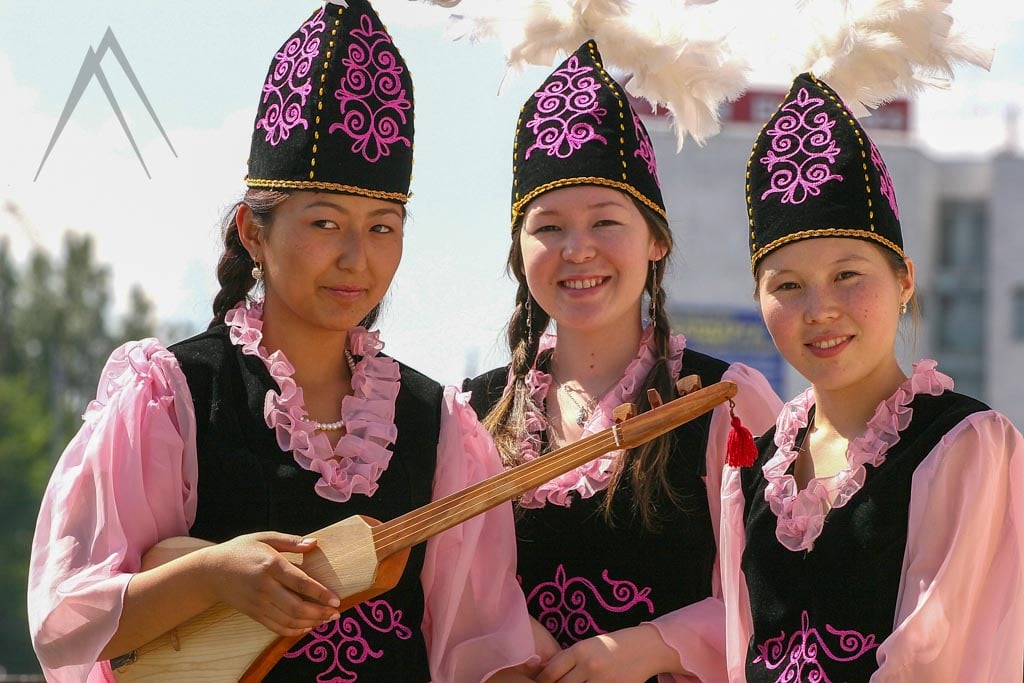
Elechek
You won’t most likely see women wearing elecheck (or Elichek) in Kyrgyz everyday life, but only during the nation holidays and events. Elecheck is the traditional Kyrgyz headdress for married women and in previous times, married Kyrgyz women were identified from this head cloth. The bride wore this hat on her wedding day and did not stop wearing it until her death. It was removed only during the night.
Elechek in each Kyrgyz region differ somewhat from each other. In the south, the neck was not covered as there the climate is much milder. But instead they wore a specially spun Oromdor under the handkerchief in order to protect the face from the sun.
The length of the white elechek canvas can reach 40 meters. High elechek could be worn only by very wealthy women it was a sign of the noble origin. For nomadic Kyrgyz, the fabric was a very valuable commodity. If necessary, a woman could cut off part of the elechek, for example, to wrap a child or to stem the blood flow from a wound.
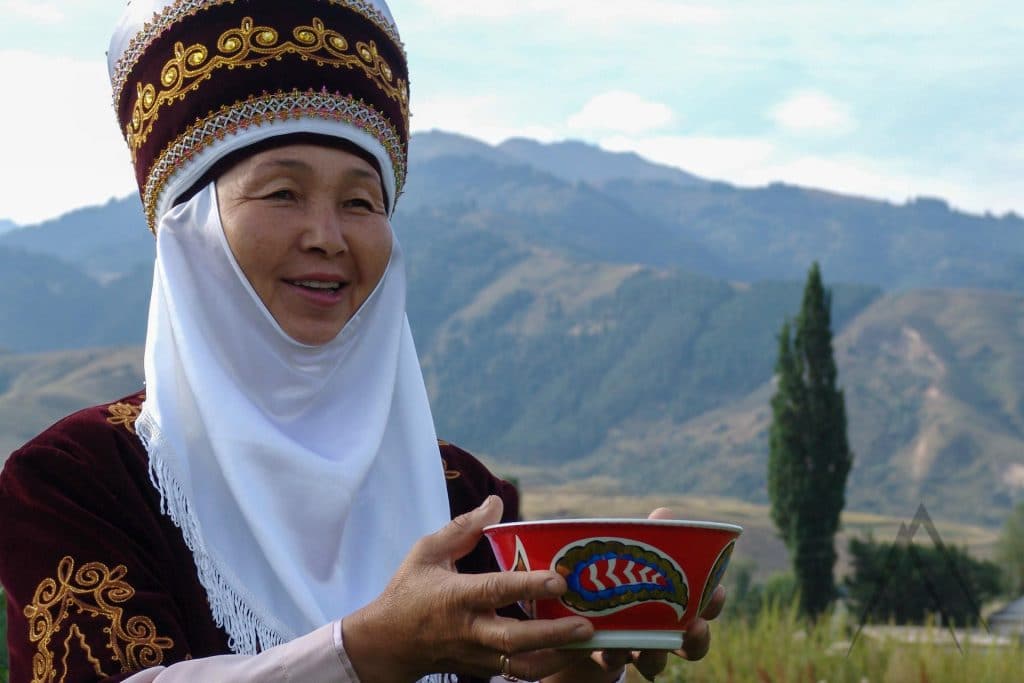
Head scarf in Kyrgyzstan (Zholuk)
In the 1920s, as Soviet power developed, women began to join fieldwork, marking a significant shift in their roles. Working in bulky elecheks (traditional robes) under the hot sun was not easy, so over time, these garments were gradually replaced by headscarves, which provided more comfort and practicality.
Today, headscarves are commonly worn by older women in Kyrgyzstan, and in many families, it is considered important for brides to wear a headscarf when in the presence of their husband’s relatives or when visiting family in rural villages. During weddings, respected elders from the groom’s family place snow-white shawls over the bride’s veil, symbolising her new role in the family as well as at funerals as a sign of respect. After marriage, young girls often wear a white scarf, showing their newlywed status.
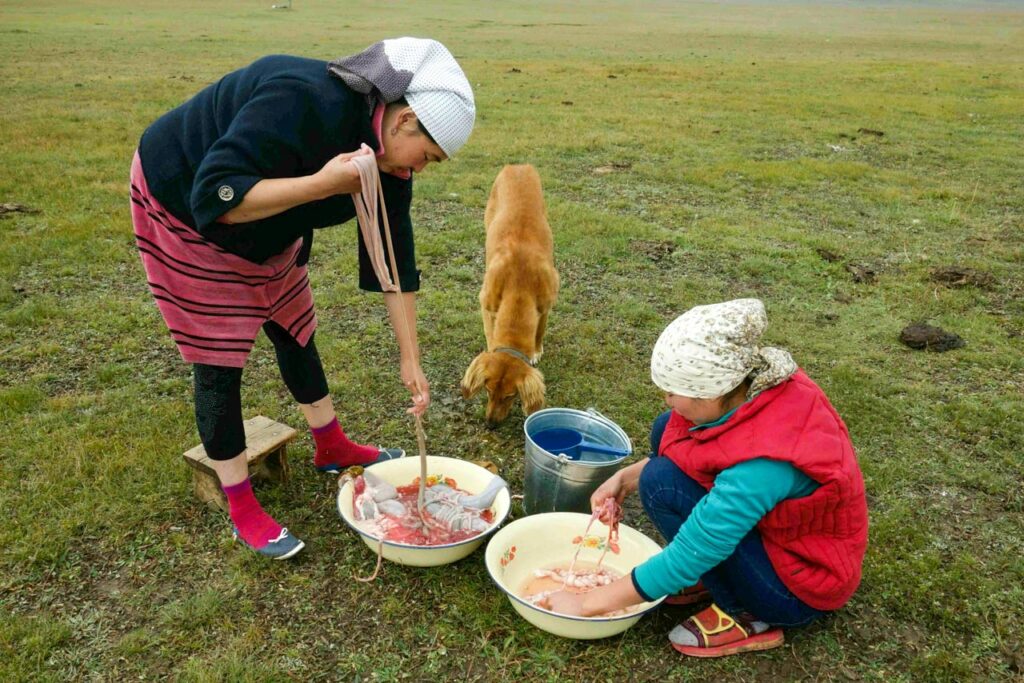
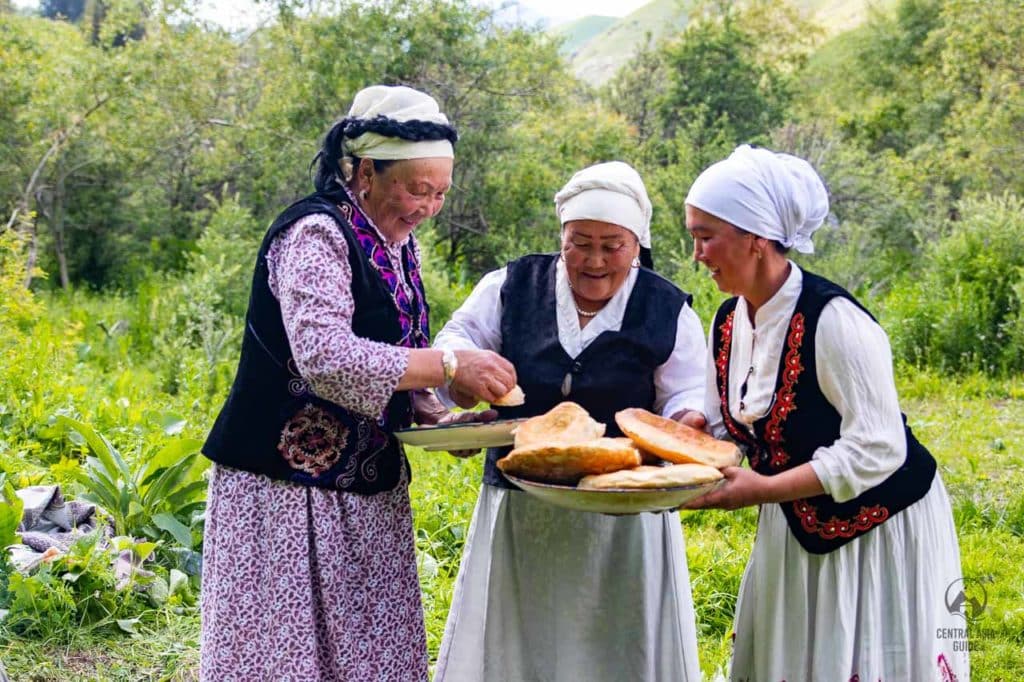
Tumar (Amulet)
Tumar is a triangular form talisman against the evil eye and is believed to keep bad spirits away. Tumar is used to be worn to babies, toddlers, and kids.
Kyrgyz Jewelry
There is a broad choice of bracelets, earrings, and other jewellery made of gold, silver and precious stones in Kyrgyzstan. The most common material to make the jewelry in Kyrgyzstan (and Kazakhstan) is silver. By tradition these valuable possessions are passed down by the elder women of the family to the younger ones as they grow up and start their own families.
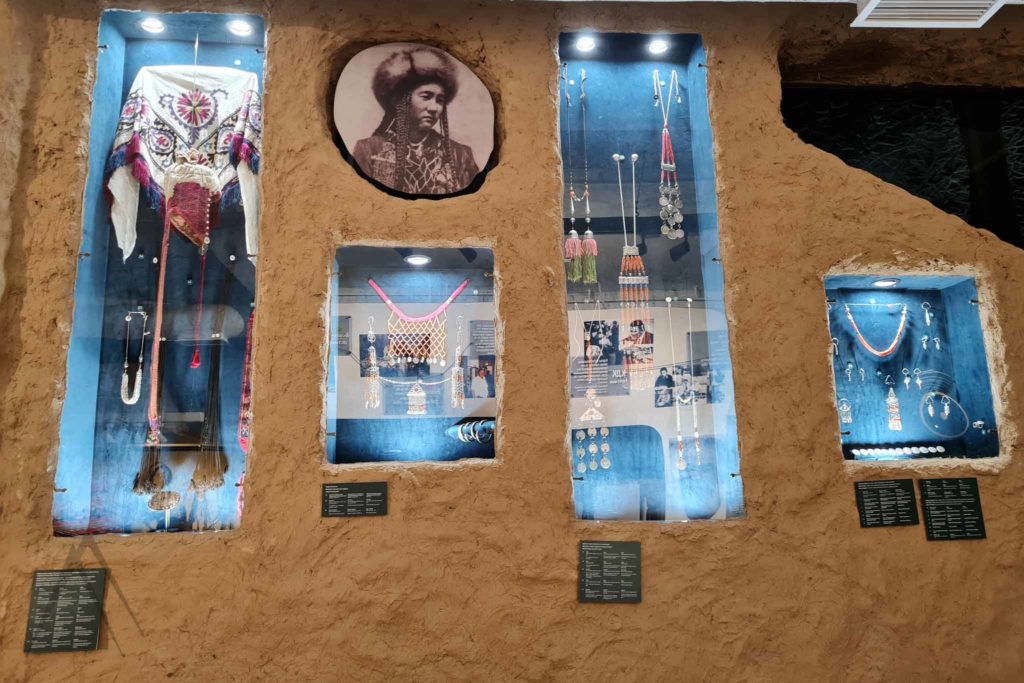

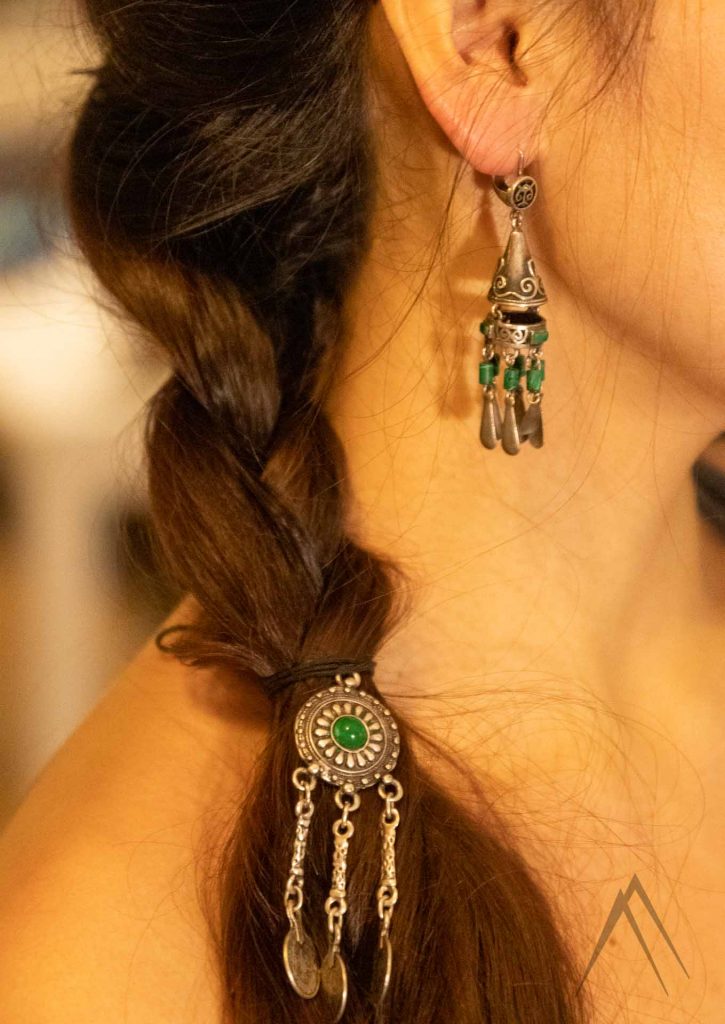
Chyptama / Kezel
Chyptama, another name is Kemzel is a short or long sleeveless jacket designed for women. It arriver later in 1930s to Kyrgyz people. It is usually worn in pairs with a skirt. Ladies decorated it with multi-colored buttons, the kemsel itself was most often sewn from red and pink fabric.
Maasy
Maasi is light leather boots are worn on the feet, over which rubber slip-on over-boots are pulled on, to be removed whenever a dwelling is entered.
Where to find traditional clothes in Kyrgyzstan?
You can easily see Kalpaks and other local clothing while visiting Kyrgyzstan during any of our Kyrgyzstan tours. Bishkek is more modern and it is getting a bit rare to witness traditional clothing there but one does not need to venture far from the capital to see that the traditional clothes are very much in use.
Page updated 4.1.2025